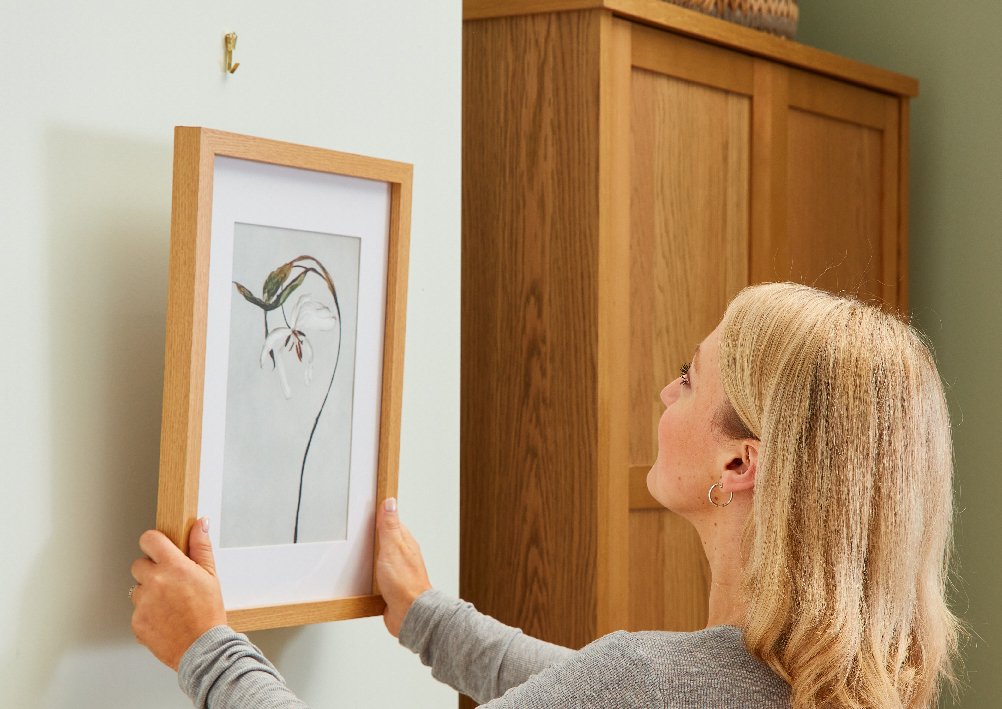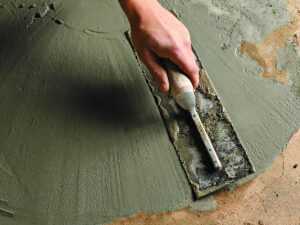
You can opt to place one or several frames on your walls to customize the decorating of your space. They can be framed photos, paintings, or other items. Whatever it is, you can attach it to the wall in a variety of methods, always keeping in mind the nature of the wall as well as the weight of your frame. We invite you to learn how to hang your frames successfully.
Choose The Place of Your Frame
One of the most important aesthetic aspects of framing is to hang it at the proper height. As a result, you should position it at eye level to gain optimal visibility of the painting. It should be situated 1.52m above the ground on average, with the center of the frame about at eye level. Obviously, a huge frame must be installed lower.
If a piece of furniture is to be put on the ground beneath the frame, it should not be taller than 76 cm. Whatever the piece of furniture, you must consider it by following the guideline of two-thirds of its length. This means that the frame should not be longer than 2/3 the length of the overhanging piece of furniture and should be placed between 15 and 25 cm above the item of furniture.
In addition to this aesthetic aspect, you must consider natural and artificial lighting, as well as the color and design of the room, when deciding where to install your frame.
It is better to be able to determine the location of the table with two people: one who holds and one who stands back to examine the rendering.
Drill The Wall or Not?
Once you’ve established the place, you’ll need to figure out how to fix your frame. You should be aware that there are alternatives to drilling holes in the wall. Indeed, drilling the wall is not necessary for your wall decoration weighing less than 5 kg: the trade offers simple options, such as Velcro strips to place on the wall and on the frame to subsequently fix them together, sticky hooks, and so on. However, you must exercise caution while using this sort of fastening and avoid hanging anything delicate. They are not always totally reliable, depending on the wall covering or over time. If the frame is heavy or delicate, use a dowel that is appropriate for the type of wall.
The Different Fixing Systems
There are several options for mounting a frame without drilling into the wall.
- Adhesive tabs adhere to the frame and then to the wall to keep the two together. The two tabs will then come together to scrape one another. Install many around the frame for better stability.
- Patafix, a sticky gum, can be used to hold smaller frames together. Patafix comes in a variety of colors, including black, which is more strong.
- The double-sided adhesive works in the same way as the adhesive tabs by adhering the frame to the wall directly.
- The sticky hooks stick to the wall, and all you have to do is hang the frame.
- The magnetic sticky hook: this time, the painting is hung on the wall with the help of a magnet system.
Choose a fixing that requires drilling into the wall for heavier frames.
- Hooks can be attached to the wall with spikes and a hammer. It is a dependable method for securing your frames. Hooks come in a variety of shapes and sizes.
- You can also use anchors to fix the frame by inserting a screw or a hook that protrudes far enough to support the frame.
- A picture rail, a popular solution in exhibition rooms, allows you to move the frames around as you choose. This is a metal rail that is attached to the wall’s top.
When deciding on a mounting mechanism, consider the weight of the frame as well as the nature of the wall.
Wall Mounting Depending on The Nature of The Wall

- If you want to mount your frame on a plasterboard wall, you must use Molly-type, self-drilling, or expansion anchors.
- If you wish to mount your frame to a plywood, chipboard, or wood wall, you may simply use spikes, nails, wood screws, or hooks.
- If the wall you want to hang your frame on is composed of cellular concrete or plaster tiles, use self-drilling dowels, nails, or X-hooks.
- If you wish to mount your frame to a brick, cement, or concrete wall, you’ll need universal anchors or steel anchors, concrete pitons, short point hooks, or spiral concrete sockets.
The Necessary Equipment
To ensure a clean job, gather all of the necessary equipment before beginning. You won’t need quite the same hardware depending on whether you drill into the wall or not.
- In any case, you’ll need a meter to measure the various lengths.
- A spirit level is also important for ensuring the straightness of your artwork, especially if it is huge.
- The mounting system you’ve chosen, as well as everything required to install it.
Install Your Frame

The frame is simple to assemble and does not require extensive DIY experience. All that remains is to get started once you’ve chosen the position and the proper means of connection. The method varies depending on the solution you’ve chosen.
- It is advised that the surface be well cleaned and dried before connecting a frame to the wall without drilling. Follow the manufacturer’s directions on the packaging carefully.
- If the weight necessitates drilling for increased strength, begin by drawing a line to mark the spot.
- Drill the pre-hole(s).
- Drill and insert the dowel, followed by the hook or screw.
- There, hang your painting.






